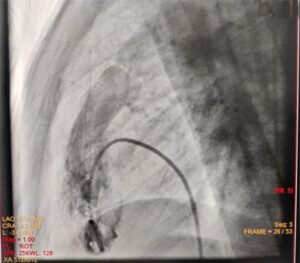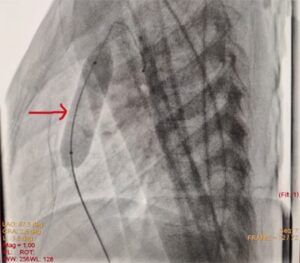All About Pulmonary Stenosis
Overview
Pulmonary stenosis is a birth defect of the heart (congenital). It can happen when the pulmonary valve doesn’t grow as it should in a baby during the first 8 weeks of pregnancy. The pulmonary valve connects the right ventricle to the pulmonary artery.
Symptoms:
- Hard or fast breathing
- Bluish color around the lips or fingers (cyanosis)
- Shortness of breath
- Feeling tired, especially with activity or exercise
- Fast heart rate or Irregular Heart Rate (Arrhythmia )
- Fainting (syncope)


If Untreated:
When blood flow from the heart to the lungs is obstructed, the right ventricle has to work harder. This causes the heart muscle to get thicker. This is known as hypertrophy.
If severe obstruction is not treated, the right ventricle can begin to function poorly. This might cause arrhythmias (irregular heartbeats), loss of energy and fluid retention. If the pressure in the right heart is high enough, unoxygenated or “blue” blood can cross over into the left atrium. It then mixes with red or oxygenated blood. This results in cyanosis or blueness.
Case Summary:
A 3 years baby was admitted with history of breathlessness since 1 year with no weight gain. She was a pre term baby (8 months LSCS) and was diagnosed to have Congenital Heart Disease (Acynotic) with Moderate to Severe Pulmonary Stenosis. After detailed evaluation she underwent Balloon Pulmonary Valvuloplasty.
The pulmonary valvuloplasty was performed with 14 X 40 mm balloon, which was inflated (twice) at nominal pressure at the valve plane level, with the formation and disappearance of the hourglass image.
Post-Pulmonary valvuloplasty pressures were: RA = 9, Pulmonary gradient: 20 mm of Hg (Pre Procedure gradient – 50 mm of Hg), RV = 60/4 (Pre Procedure 48/4) with no significant gradient post procedure . Therefore, the procedure was considered very successful.